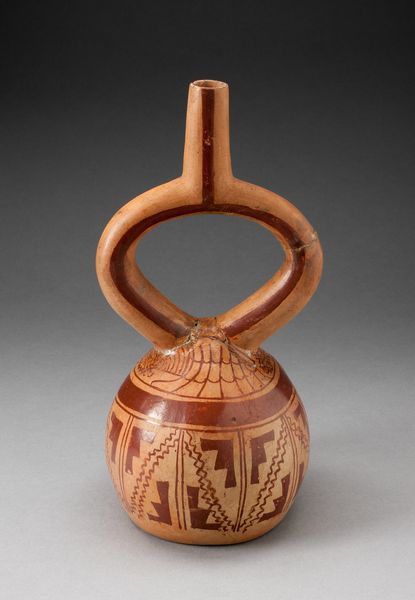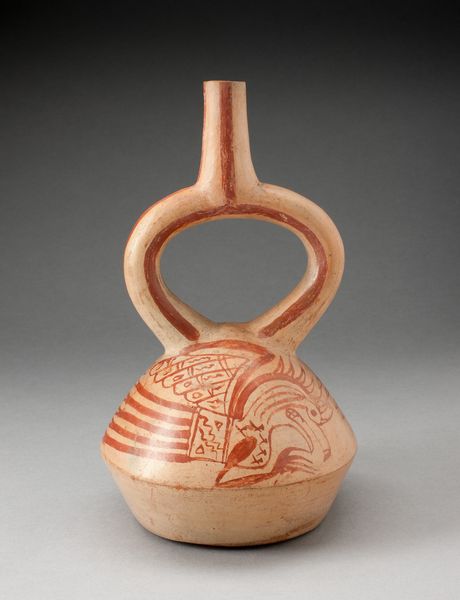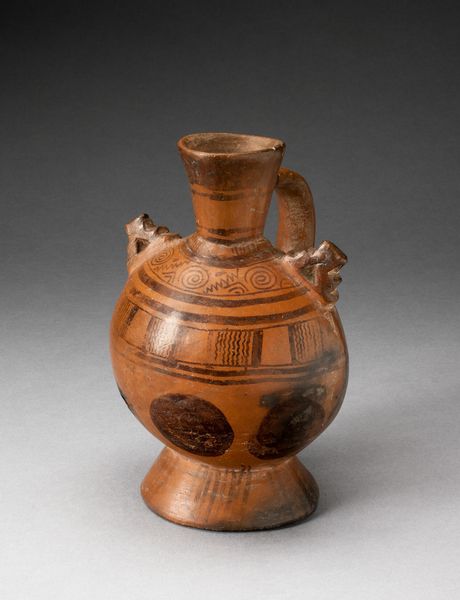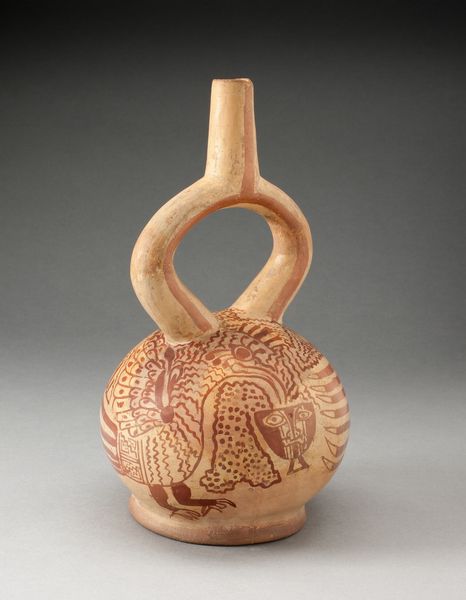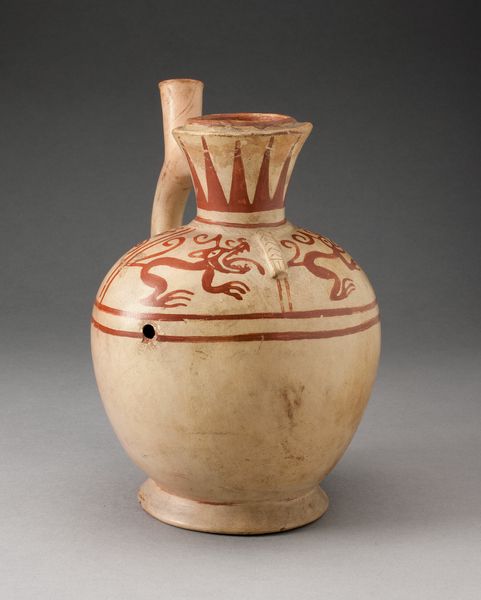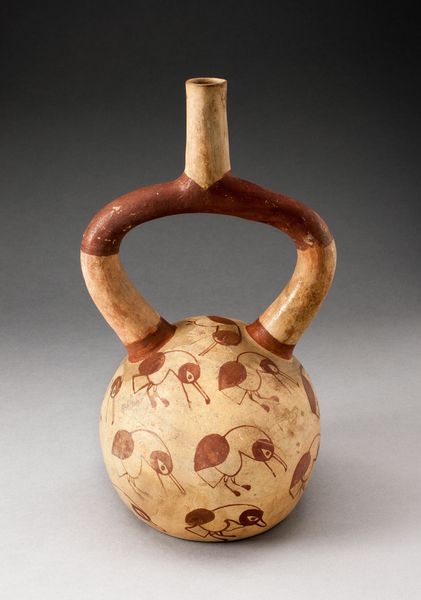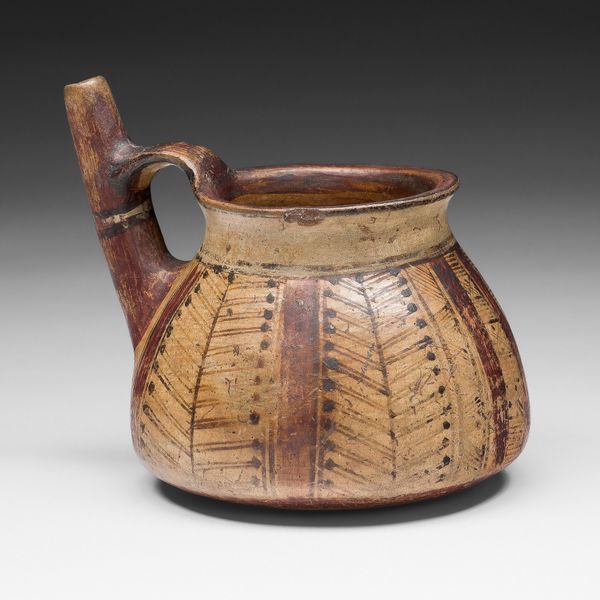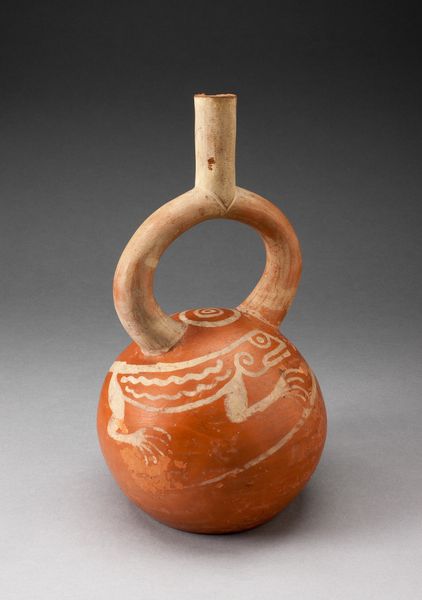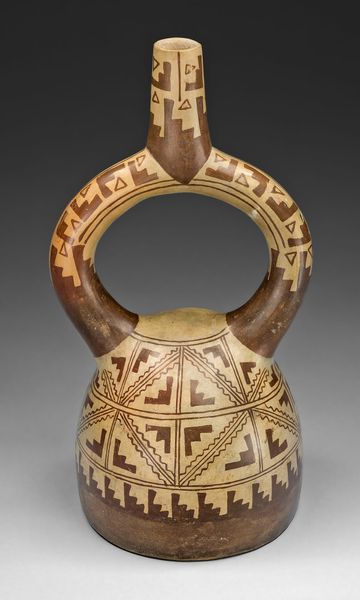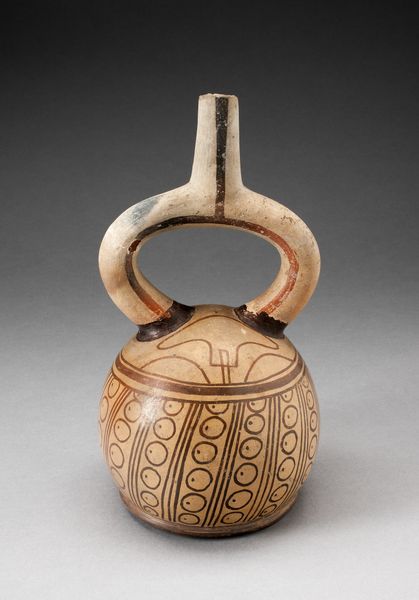
ceramic, terracotta
#
ceramic
#
form
#
geometric
#
ceramic
#
terracotta
#
indigenous-americas
Dimensions: 23.3 × 12.7 cm (9 1/8 × 5 in.)
Copyright: Public Domain
Curator: This striking ceramic vessel dates back to the Moche culture of ancient Peru, created sometime between 100 and 500 AD. It is currently part of the collection here at the Art Institute of Chicago. What are your first impressions? Editor: It's incredibly well-preserved! There’s a quiet energy to it; the reddish-brown geometric designs against the light tan clay give it a grounding, earthen quality. The stirrup handle is quite unique too. Curator: Yes, the stirrup spout is a hallmark of Moche pottery. The vessel shape wasn’t purely decorative, though. It actually served a practical purpose related to liquid storage and pressure. We believe these vessels were produced for the elite. The symbols represent something more than decoration. Editor: You’re right. Geometric shapes are rarely just "decoration," especially in a hierarchical society like the Moche. The repetitive triangle and band motifs must hold symbolic weight tied to power or social structure. Also, water vessels played a critical role, specifically irrigation. Were these symbols ever affiliated with control and distribution? Curator: Indeed. Visual symbols acted as powerful carriers of cultural memory, preserving ancestral beliefs across generations, ensuring the longevity of societal values. As for the symbolism, it is worth keeping in mind that the Moche didn’t have a written language in the modern sense. Pottery served as one medium for encoding crucial stories, myths, and social codes. Editor: That brings up a critical point: The visual culture *was* the culture, especially for those excluded from the circles of power. How were women included? Or excluded? Does pottery give us hints to interpret how women are represented? I would think so! Curator: Although little direct insight can be offered, the Moche used their art as a vital form of communication. Now, after centuries of oblivion, it is up to modern curators and scholars to explore what it all really means. Editor: Right. Now it’s on us to learn and explore and question—always question, for history always deserves more examination, more interpretations, more context. Curator: A sentiment to consider further as we make our way to our next object.
Comments
No comments
Be the first to comment and join the conversation on the ultimate creative platform.
